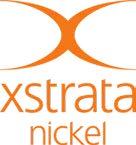
Xstrata and Sabina Want Bathurst Road and Port
Mining companies pin hopes on western Nunavut port and road
Xstrata Zinc, Sabina Gold and Silver want Bathurst road and port
JANE GEORGE
Nunavut April 15, 2013
This map from Sabina Gold and Silver Corp.'s project description report shows the location of its proposed Back River gold mine, located south of Bathurst Inlet.
The calm waters of Bathurst Inlet see little traffic: that would change if the planned Bathurst road and port project moves ahead.
An ambitious project, which seemed too large, costly, and unimaginable to build just 10 years ago, now appears to be bringing a major transportation hub to one of Nunavut’s most picturesque places.
The Bathurst road and port project, which used to be known by its acronym, BIPAR, has now lost an “A” and is called BIPR.
But, more importantly, the project has gained two major mining companies as key supporters, who want to see the port and road built for their future mines in western Nunavut.
While neither company, Xstrata Zinc Canada, or Sabina Gold and Silver Corp., knows whether their mine projects south of Bathurst Inlet will proceed, they’re progressing with their plans for BIPR — which, by itself, will be a huge undertaking.
BIPR’s first stage — which could start as early as 2015 — would see the construction of a wharf to serve giant ice-class vessels (up to 50,000 tonnes), which would deliver fuel and bulk cargo to the port, and eventually serve to transport zinc concentrate to Europe.
BIPR would also include a dock to handle barges serving the Kitikmeot communities, a 200-person camp and services, a 220-million-litre diesel fuel tank farm, a 40 MW power plant (producing four times more electricity than the power plants in Kuujjuaq or Iqaluit), and a 1,200-metre airstrip and heliport, which would see 6,400 round-trip flights during the four-year construction period.
The first phase of the project would also include the construction of 10-m wide, 83-kilometre road, with as many as 27 bridges.
The Nunavut Impact Review Board recently received a new project proposal from the companies, with more details on environmental issues, wildlife protection, marine and road traffic than an earlier version submitted to the regulator last December.
That new proposal will determine the guidelines for the project’s future draft environmental impact statement.
But the good news for the companies is that they won’t have to reinvent the wheel, but only supplement the lengthy draft EIS with more information, Xstrata Canada’s Denis Hamel told Nunatsiaq News at last week’s Nunavut Mining Symposium in Iqaluit.
That’s despite the mixed reaction from many groups who sent in comments on the BIPR project to the NIRB.
This year, the two mining companies plan to continue pre-feasibility studies on the project, continue into the permitting process, and get organized for a big pre-construction year in 2014. They’re also looking for other partners to offset the project’s cost, Hamel sad
But Xstrata wants the port built because otherwise its proposed mine won’t make economic sense, he said.
“Shipping year-round is still the best economic choice,” he said.
That’s because, among other things, year-round shipping — at a frequency of one ship a month — will reduce the number of ships at the port site at any given time. This means you won’t see boats and barges docked up and down the Bathurst Inlet during the late summer, Hamel said.
In his presentation at a symposium session, Hamel also showed a video about how a ship plows through the ice in winter. The trace can be crossed by snowmobiles on special bridges within an hour after the ship passes, he said.
Spending money to advance BIPR now seems like a good short-term investment, said Hamel, although Xstrata can’t yet make the final decision about the project or the mine until the project goes through all the permitting hoops.
For now, Xstrata is pouring $40 million into advanced exploration at the mine project — (much more than the $6 million MMG is spending on its nearby Izok Corridor project in 2013).
The four open-pit and two underground mines at Xstrata’s Hackett River project would produce 250,000 tonnes of zinc per year over 15 years, provide 800 jobs during construction and 500 when operating. The zinc would be shipped out through the Northwest Passage, past Resolute Bay and down the west coast of Baffin Island to Europe.
Sabina, aiming for a 2016 start-up, also plans to spend more than $60 million in 2013.
Sabina’s Back River gold mine, which would take two years to build, operate for 10 to 15 years and then take five years to close down, would hire 1,600 workers during the construction phase and 900 during the mine’s operations. The project, which would produce 300,000 to 400,000 ounces of gold a year, would also include open-pit and underground mines.
As for BIPR’s cost, that was estimated at $270 million several years ago, when the project’s first proponents, the Kitikmeot Corp. and Nuna Logistics, unsuccessfully sought federal money to kick-start the port and road complex as a way of encouraging economic development in western Nunavut.
In 2008, they ended up shelving the project.
People in the Kitikmeot region will have another chance to learn more about BIPR and Sabina’s proposed mine project next week when mine representatives will tour Kitikmeot communities.
Meetings, with snacks and door prizes, are scheduled for:
April 22, in Kugluktuk at 7 p.m. in the Jimmy Hikok elementary school gym;
April 23, in Cambridge at 7.p.m. in the Elders Palace;
April 24, in Gjoa Haven at 7 p.m. in the community hall;
April 25, in Taloyoak at 7 p.m. in the community hall; and,
April 26 in Kugaaruk at 7 p.m. in the community hall.
















